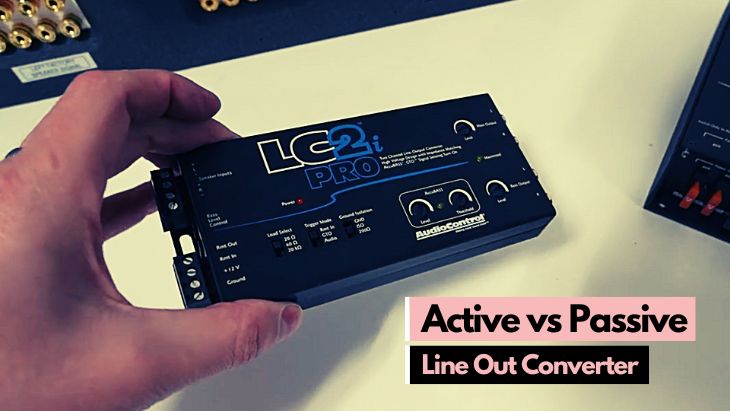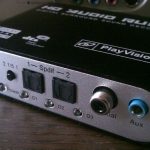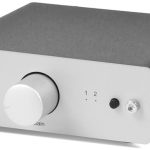When installing most car audio components, you are likely to deal with voltage issues. Essentially, your car’s electrical system has to output enough power to keep the amplifier and radio working optimally. When it comes to amplifiers, they need to boost the voltage of audio signals to drive the car speakers.
If you want to add an amplifier to a factory audio system, the voltage that your factory radio outputs need to be sufficient enough for the amplifier to work optimally. Unfortunately, most factory radios do not output compatible voltage with aftermarket amplifiers. That is where a line output converter comes in handy. In this article, we will discuss the role of LOCs and compare active vs passive line output converters.
Quick Comparison
| Active Line Output Converters | Passive Line Output Converters |
| Complex design | Simple design |
| Requires power to run | Does not require power to run |
| Requires grounding | No need for grounding |
| Better sound quality | May reduce sound quality |
| Challenging to install | Easy and quick to install |
| Ideal for high-powered factory radios | Ideal for low-powered factory radios |
Introduction to Line Output Converter

A line output converter (LOC) is sometimes known as a hi-low or high-to-low converter, line level converter, or speaker input adapter. The role of a LOC is to take a high-level signal from a factory radio and convert it into a low-level signal by lowering the voltage of the signal, thereby making it possible to hook the radio to RCA preamp inputs of an amp.
Most aftermarket car amps accept an input voltage of up to 6 volts. Even an average car radio can output more than 6 volts of an audio signal. If the input signal exceeds the maximum input voltage, the input circuitry may be overdriven, thereby resulting in distortion and clipping.
Line out converters are available in two options including active line output converts and passive line output converts. They are all designed to convert high-level signals to low-level signals. However, they work differently. Let’s compare them in detail.
Active Line Output Converters
An active LOC is typically more advanced in terms of design and functionality than a standard passive LOC. An active LOC requires a power supply to convert the incoming high-level signal and output a low-level signal. Also, it requires a ground connection for efficient running.
Active LOCs are also used as line drivers to increase the output signal voltage. For instance, if your car radio is low-powered and can only output up to 2 volts to the preamp, you can add an active LOC as a line driver to increase the signal voltage to about 4 or 5 volts. That way, you can reduce the amp sensitivity level for a better signal-to-noise ratio in your car audio setup.
Passive Line Output Converters
Passive LOCs often feature small audio transformers that work by reducing the voltage of an audio signal. The transformer has an input winding that lowers a high-level speaker signal voltage significantly, thereby outputting a low-level RCA signal. They are passive in design such that they do not require power and grounding to work.
Active Vs Passive Line Output Converter – Which is better?
To start with, active line out converters handle a lot more power than passive line out converters. Thus, you can safely use an active LOC with high-powered car radio systems and OEM amplified radios. Overall, active LOCs offer better sound quality on the output. Also, some active LOCs have several extra features such as bass restoration, remote turn on, line driver functionality, and channel summing.
On the other hand, passive LOCs are more ideal for use with low-powered audio systems. If your factory radio does not feature a built-in amp, a passive LOC would be your best option. Also, they are simpler to install since you do not have to connect them to a grounding point and power. However, passive LOCs tend to drop the signal quality. If a passive LOC gets a weak input signal, it will output a weaker signal.
How Do You Choose Between an Active Vs Passive Line Output Converter?
If you are planning to install a line output converter to hook your factory radio to an aftermarket amp, start by determining the amount of input voltage it can accept. Next, determine the extent to which it can decrease or increase the voltage of the audio signal. Also, you need to determine the output impedance on the preamplifier side.
It will also help to know the frequency response of the line out converter. Basic passive LOCs may not pass some very high frequency or deep bass audio. Active LOCs are ideal for deeper bass and very high frequencies.
Since line output converters are a type of audio signal processor, it will help to know their distortion and noise specifications. For the best results, noise specification should not exceed 110 dB while total harmonic distortion should not exceed 0.05 percent.
Another important feature to check is the ability of the LOC to provide the amplifier with a remote turn-on signal. In this case, a good line out converter should have a way to detect that the radio is turned on by detecting an input audio signal. As a result, it should turn itself on and generate an output signal. You can also check whether the LOC comes with remote level control. That way, you can adjust the volume level via the LOC.
Final Thoughts
If you are planning to add an amplifier to a factory radio, you are likely to experience compatibility problems with the audio signal. This is because most factory radios output high-level speaker signals while aftermarket amps usually accept low-level RCA input signals.
In this case, a line out converter helps to lower the voltage of a signal such that it converts high-level speaker signals to low-level RCA signals. When choosing between active vs passive line output converter, know the specifications of your radio and your preferences to make the right choice. Hopefully, our guide will help you out.
Michael Evanchuk is a San Francisco-based sound engineer with 20 years’ experience installing, troubleshooting, and repairing commercial, automotive, and household sound equipment. Evanchuk owns an auto stereo center, where he offers highly competitive car audio installation and repair services. He has written dozens of articles on different sound engineering topics, all of which have been published in leading journals, blogs, and websites.





